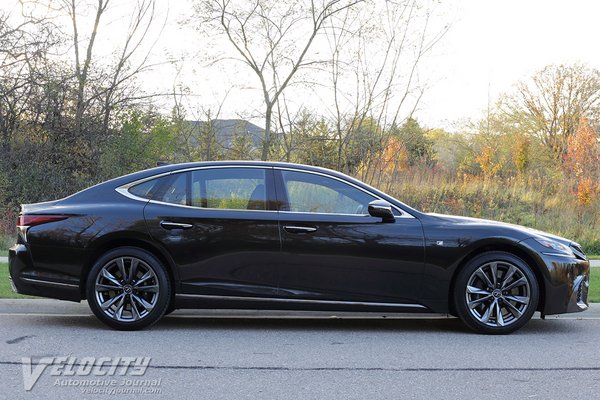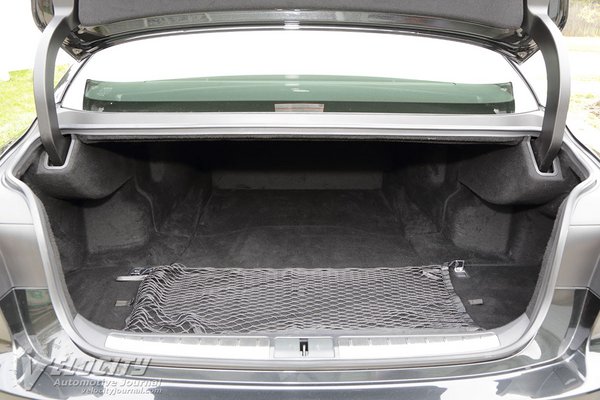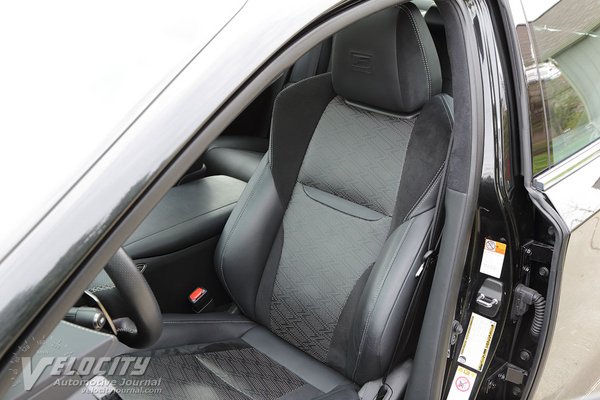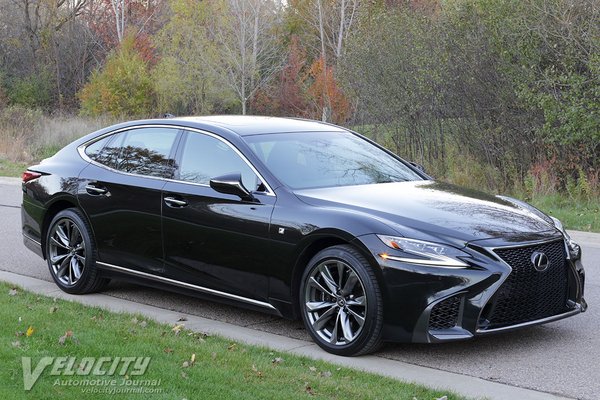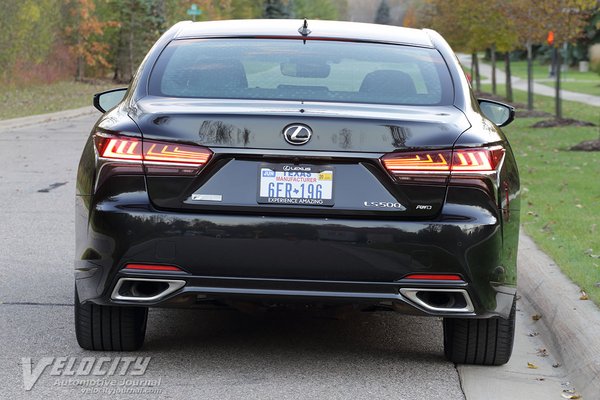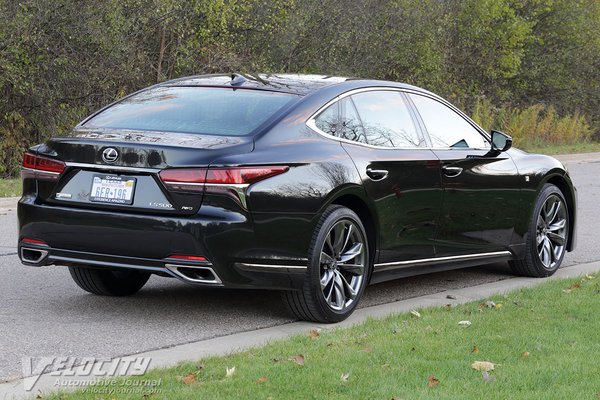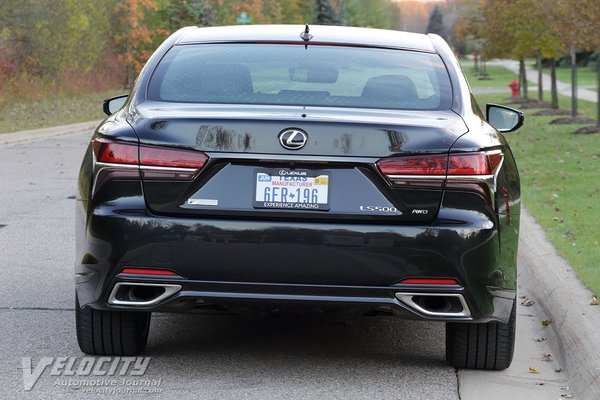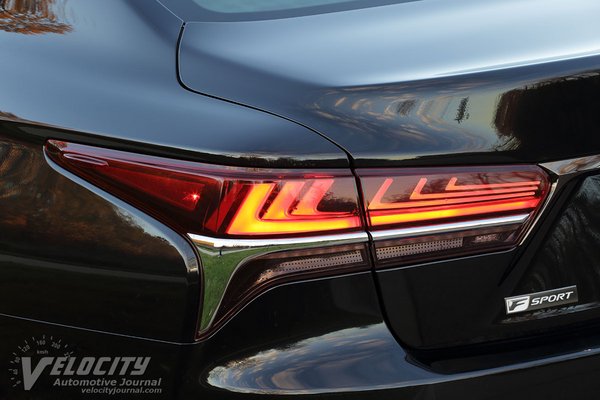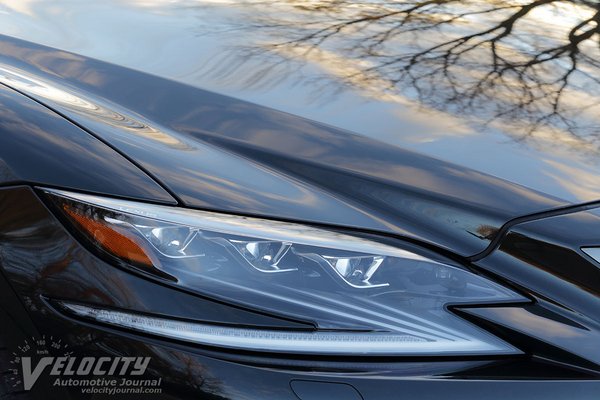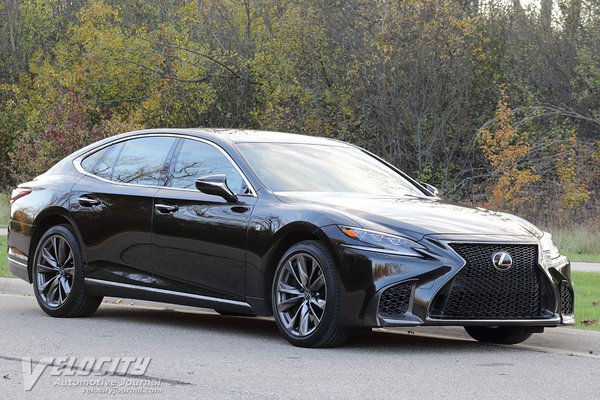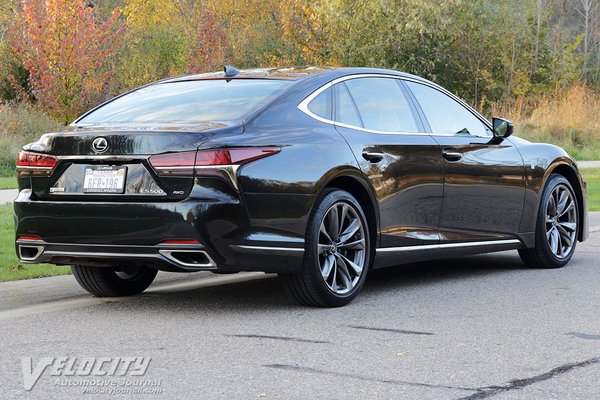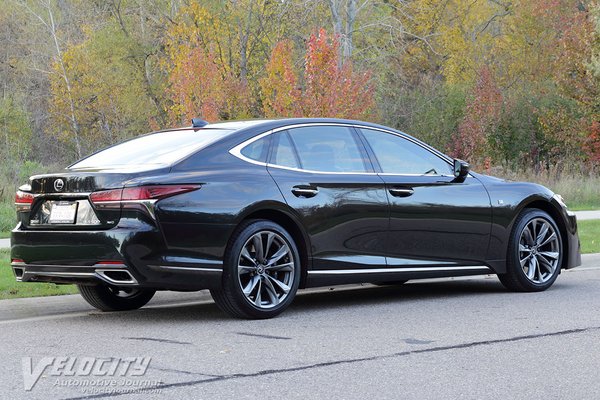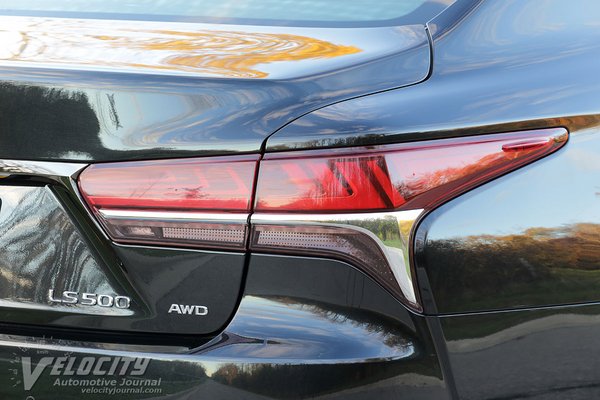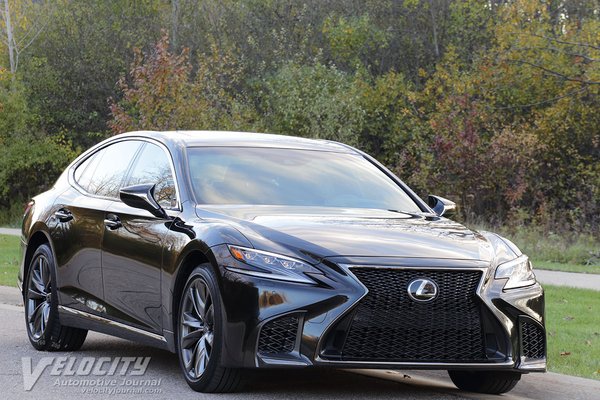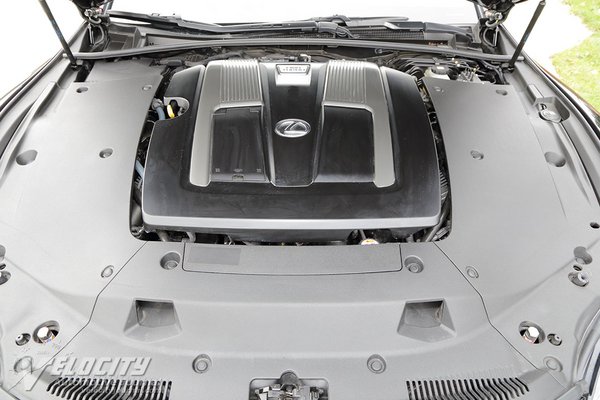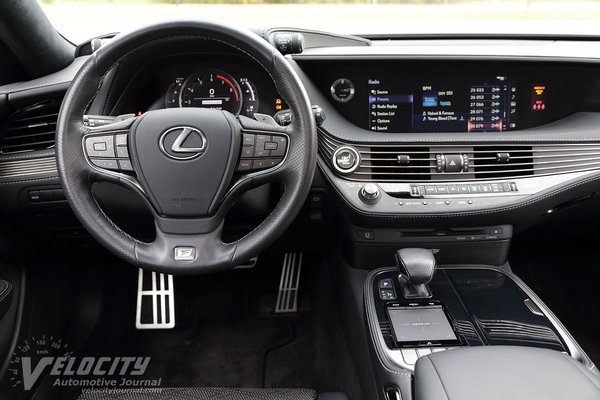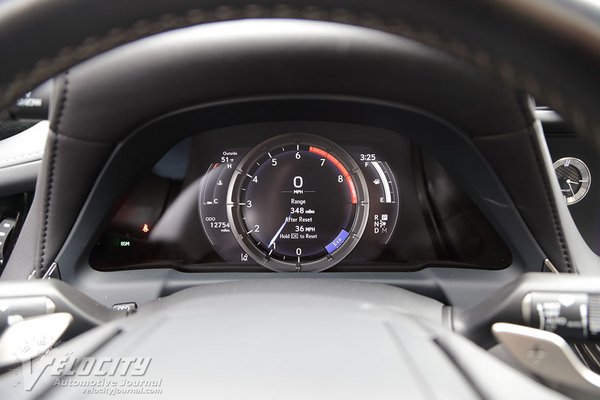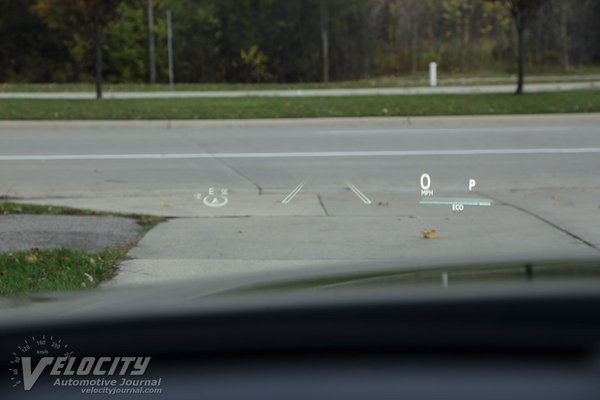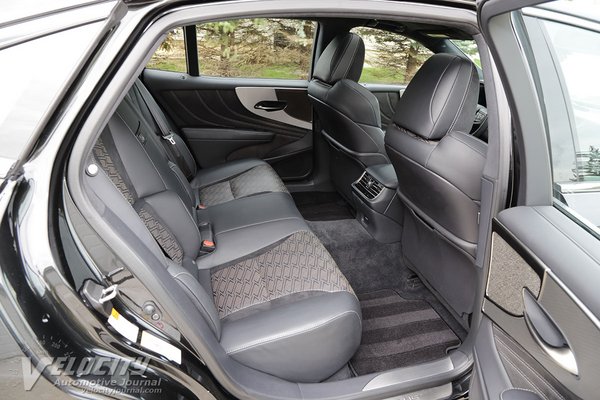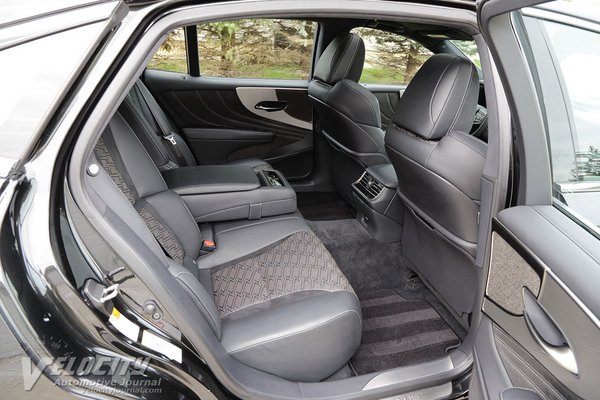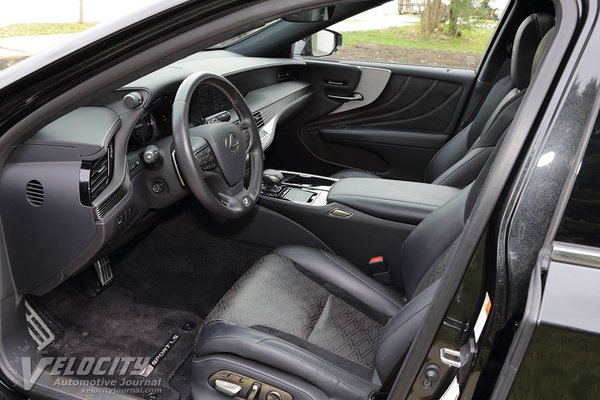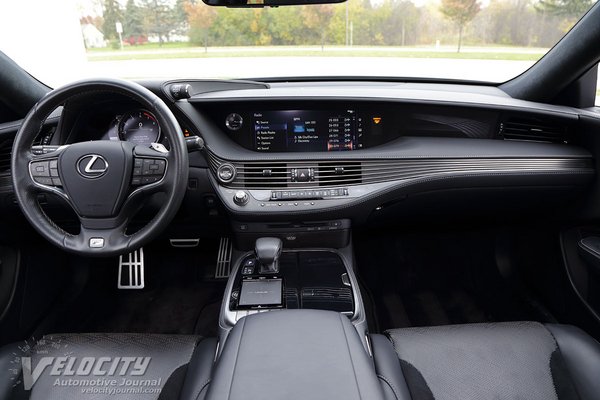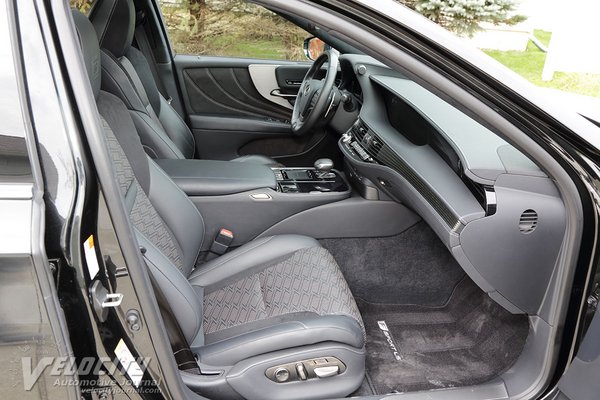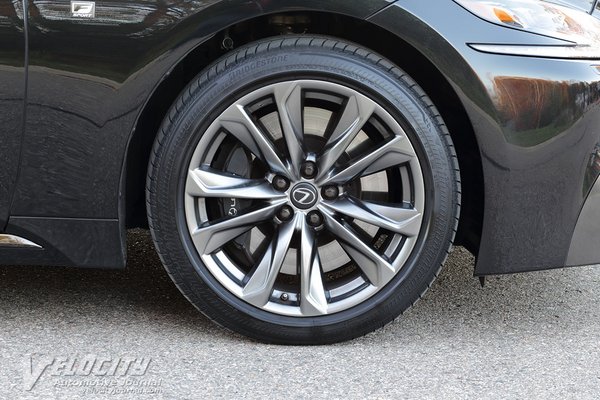2018 Lexus LS 500 F Sport AWD Review
12/31/2018
Shahed Hussain
Lexus disrupted the luxury sedan hierarchy with the LS 400 nearly 30 years ago. Several generations later, the new LS 500 is the most extensive redesign its history. All previous LS sedans had 8-cylinders under the hood, but the LS 500 trades the V-8 for a new twin-turbo V-6. As before, the LS lineup includes a hybrid version (LS 500h) and an F Sport package (LS500 only). Both LS 500 and LS 500h are available in rear-drive or all-wheel drive models. Pricing starts at $75,000 (LS 500 RWD), with LS hybrid in the middle $79,510 (LS 500 h RWD), and up to $84,220 (LS 500 F Sport AWD).
We tested a LS 500 F Sport AWD equipped with a panoramic sunroof ($1,000), and Mark Levinson audio system ($1,940). Other significant standard equipment included navigation, color head up display, heated steering wheel, heated and ventilated front seats, heated rear seats and power rear sunshade. The F Sport package adds unique 20-in. alloy wheels, upgraded brakes, F Sport steering wheel, aluminum pedals and interior trim, sport seats, and sport suspension. The total MSRP plus the $1,025 delivery fee added up to $88,185.
Lexus stylists transformed the LS 500 interior into a contemporary design with flowing brushed aluminum trim across the dashboard. Luxurious synthetic suede and brushed aluminum accents the door panels. A gloss black center console and vents add visual contrast to the dark gray interior theme. Throughout the cabin, exceptional materials are combined with superb build quality.
The driver faces a configurable LCD gauge cluster with a simulated analog tachometer with a digital speedometer within. Coolant temperature and fuel level gauges flank the tachometer on both sides. Compact paddles behind the steering wheel allow manual shifts on demand. A 12.3 in. screen on the center stack displays navigation and other infotainment data. Lexus does not use a touchscreen, instead a haptic touchpad controls various infotainment functions. Even with tactile vibrations to guide menu selections, a conventional touchscreen is more accurate than a touchpad. With the touchpad conveniently located behind the shifter, the widescreen display can be inset deep within the dashboard to minimize glare and reflections.
As expected from a luxury sedan, the front seats are exceptionally supportive, with firm thigh and torso bolsters. The seats offer 28-way adjustability, with additional settings accessible via menus in the infotainment system. Rear seat passengers will appreciate the spacious accommodations and expansive legroom. Even the center seat position is acceptable for short trips.
Replacing the previous 4.6L V-8 is a new all-aluminum 3.4L V-6 (Lexus refers to it as a 3.5L) with variable valve-timing (intake and exhaust), direct and port fuel injection. Forced induction is via two intercooled turbos engineered and manufactured by Lexus (Toyota). Maximum power is 416-hp @ 6,000 RPM and peak torque is 442 lb.-ft. from 1,600-4,800 RPM. A new 10-speed automatic has overdrive ratios for eighth (0.792:1) through tenth gears (0.598:1). The AWD system controls front/rear torque split through a Torsen center differential; torque distribution ranges from 31/69 (F/R) on dry surfaces to 48/52 (F/R) on slippery roads. Fuel consumption is estimated at 18/27 MPG (city/ hwy.) for the LS 500 AWD; the RWD model is slightly more fuel efficient at 19/29 MPG (city/hwy.). Lexus claims 0-60 MPH in 4.6 seconds (RWD) and an electronically limited top speed of 136 MPH.
Lexus adopted a new multi-link suspension design at the front and rear using forged aluminum links. Coil springs and electronically adjustable dampers are at each corner, along with stabilizer bars. An air suspension is available on other LS models. The F Sport is equipped with the adaptive variable suspension that dynamically adjusts damping force depending on driving and road conditions. Steering is a via a rack-and-pinion system with vehicle speed-sensing electric assist. With 2.8 turns lock-to-lock (AWD), the steering ratio is not especially quick. The F Sport benefits from a serious brake upgrade: 15.7 in. dia. vented front rotors with 6-piston calipers and 14.1 in. dia. vented rear rotors with 4-piston calipers. The standard brake package has 14.0 in. dia. rotors and 4-piston calipers in front and 13.1 in. dia. rear rotors with 4-piston calipers. The AWD F Sport rides on 20 in. dia. alloy wheels shod with staggered Bridgestone Turanza T005 all season tires: 245/45RF20 (front) and 275/45RF20 (rear). Summer performance tires are also available. Curb weight for the AWD F Sport is 4,905 lbs.; an RWD F Sport is considerably lighter at 4,707 lbs. The LS has a slightly front-biased weight distribution: 53/47 (F/R).
An extensive safety technology suite includes stability control (VDIM), dynamic radar cruise control, lane trace assist (LTA), front cross traffic alert (FCTA), road sign assist (RSA), adaptive front lighting (AFS) and lane departure alert with steering assist (LDA). We discovered that the parking sensors are extremely sensitive, warning of impending contact even when backing out of a garage. The rearview camera is linked to the brakes; if the camera software detects an obstruction, the brakes engage without driver intervention and display "brake" on the display screen.
Lexus is serious about injecting genuine sport capability into the LS 500, and the F Sport package transforms the LS into a sharp handling sedan. Where the LS 500 F Sport shines is on twisty roads; in Sport and Sport+ mode the chassis grips the road with surprising tenacity. The chassis is tuned for mild understeer, so the big Lexus is surprisingly nimble for a 2.5-ton sedan. Lexus engineers calibrated the steering system to add just the right amount of assist at any speed. Five drive modes are accessible by rotating a center console knob: Eco, Normal, Comfort, Sport, and Sport+. We assessed each mode and consider the Normal mode to be the best setting for daily driving. Choosing the Eco mode reduces throttle response, resulting in leisurely acceleration. The Comfort mode is underdamped, so although bumps and potholes are less noticeable, the chassis never settles down. Selecting Sport or Sport+ settings locks out the ninth and tenth gears in transmission programming. Both settings are best suited for high speed driving; on pitted and patched surfaces, the stiffer damper settings transmit impacts directly into the cabin and vibrate the entire body structure. Partly responsible for the harsh ride are the 20-in. wheels and low-profile tires. On properly maintained roads, the firm ride from the Sport and Sport+ settings may be acceptable. The F Sport's upsized brakes can haul down this heavy sedan from speed with no concerns. Firm pedal feel adds confidence that the brakes are up to the task. As we expected from Lexus, road and tire noise are barely audible at highway speeds. The LS 500 excels at covering long distances at high speeds in hushed silence.
Although the LS trades the previous V-8 for a turbo V-6, both horsepower and torque ratings exceed the V-8 by 30-hp and 75 lb.-ft., respectively. Just as important, turbo lag is essentially nonexistent: peak torque arrives at 1,600 RPM, so throttle response from low RPM is exceptional. The V-6 generates linear thrust to far past legal speeds effortlessly; we did not miss the V-8. Also, with 10 gears available, tapping the paddles summons quick downshifts and impressive acceleration. In most conditions, we left the transmission in fully automatic mode, as the shift programming is nearly flawless.
Among full size luxury sedan, the LS is the only Japanese entrant that competes directly with BMW, Audi, and Mercedes-Benz. The LS 500 continues the Lexus tradition of luxury, effortless performance and value, but now in a more compelling package. We think the LS 500 F Sport is an impressive luxury sport sedan able to take on any competitors. Customers in the market for top tier mainstream luxury sedans should add the LS 500 as an alternative to the German brands.

